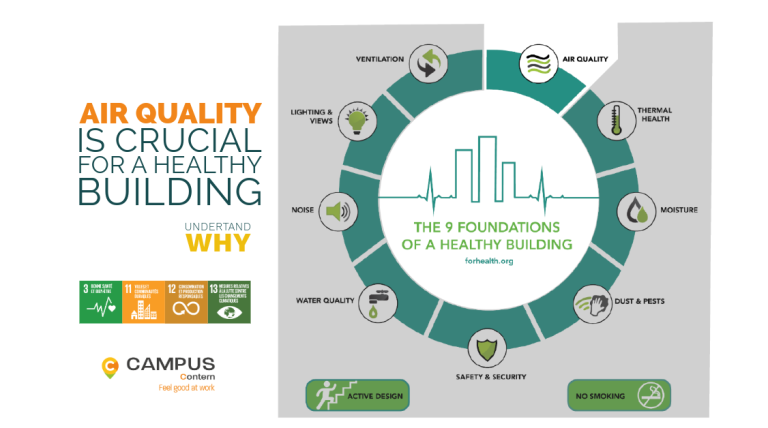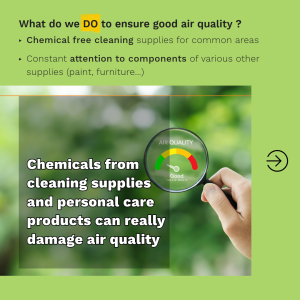By creating a healthier, more comfortable workspace, companies can improve their employees’ immunity, boost productivity and protect them from chronic illnesses linked to environmental health.
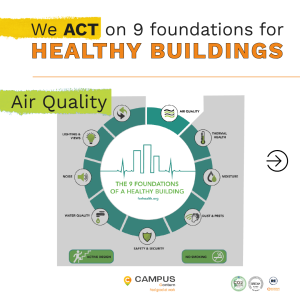
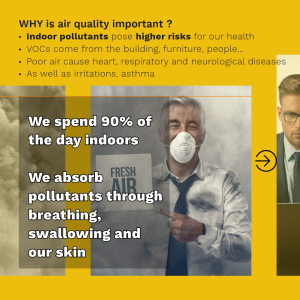
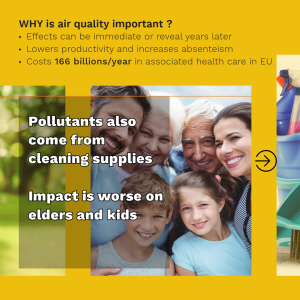
What is Indoor Air Quality (IAQ)?
Indoor air quality (IAQ) refers to the levels and types of pollutants present in indoor environments, such as homes, offices, and schools, which can affect human health. These pollutants include a wide variety of chemicals and biological agents in gas, liquid, or solid form.
Common pollutants indoors include nitrogen oxides, carbon monoxide, volatile organic compounds (VOCs), particulate matter, and even radiological hazards like radon. Because people spend up to 90% of their time indoors, the air inside buildings often has the greatest impact on their overall exposure to harmful substances.
Why is Indoor Air Quality Important? It is an immune system killer.
IAQ is crucial because poor air quality can lead to a range of health issues. Exposure to indoor pollutants has been linked to respiratory conditions like asthma, allergies, bronchitis, and chronic obstructive pulmonary disease. VOCs, for example, can cause anything from eye irritation to more severe illnesses like cancer.
Pollutants such as ozone and particulate matter can harm the heart, lungs, and other organs, leading to symptoms like fatigue, headaches, and wheezing. Vulnerable groups like the elderly and children are particularly sensitive to poor IAQ due to factors like reduced mobility and smaller airways, respectively. Health effects from indoor air pollutants may be experienced soon after exposure or even years later!
Besides health risks, poor IAQ can also lower productivity, increase absenteeism, and result in significant economic costs through medical expenses and reduced efficiency in workspaces.
In Europe, health costs associated with air quality amounts to 166 billion Euros a year. It is no wonder that environmental health (and air quality is a big part of it) is now integrated in our National Health Plan in Luxemburg.
What Can You Do to Improve IAQ?
Improving indoor air quality is possible through several strategies. Regular ventilation by opening windows and using air purifiers can reduce the concentration of indoor pollutants.
It is also important to limit the use of products that emit VOCs, such as certain cleaning supplies, paints, and personal care items.
Choosing furniture and building materials free from harmful chemicals like flame retardants and stain repellents can further reduce exposure to toxic substances.
Regular maintenance of ventilation systems and ensuring buildings are sealed properly to prevent radon infiltration can also significantly improve IAQ.
Lastly, staying informed about harmful indoor pollutants and opting for safer alternatives when available can make a significant difference in the quality of air we breathe indoors.
@CAMPUS CONTERN it means :
- We are a pilot for a unique innovative natural air purifying system that both cleans the system and ensures great air quality with 50% less COVs, PM 2.5 and 1.0, odors and dust. We use the microbiodiversity of our forest to eliminate harmful particles and chemical residues to protect and boost immunity on people : like a stroll in the forest. What used to be harmful and a productivity killer, turns into a healthy natural protection and a productivity booster. (for more details on how it works, contact our supplier moien@indoorforest.lu )
- We use chemical-free cleaning supplies for all our common areas and coworking areas to prevent allergies and further reduce the exposure to pollutants
- We pay special care in the composition of what we buy (furniture, carpets…) in order to limit the spread of COVs in the air
- We have windows that can be opened to manually ventilate when need be
Our Goal :

* To make sure that our tenants have a safe and healthy work environment. They spend a lot of time in our buildings, it is our responsibility to do our best to reduce the causes of fatigue, absenteeism and to foster concentration and performance
* To protect our tenants from chronicle diseases and play our part in the National Health Plan
Source : “The 9 foundations of a healthy building” Harvard School of Public Health – forhealth.org
